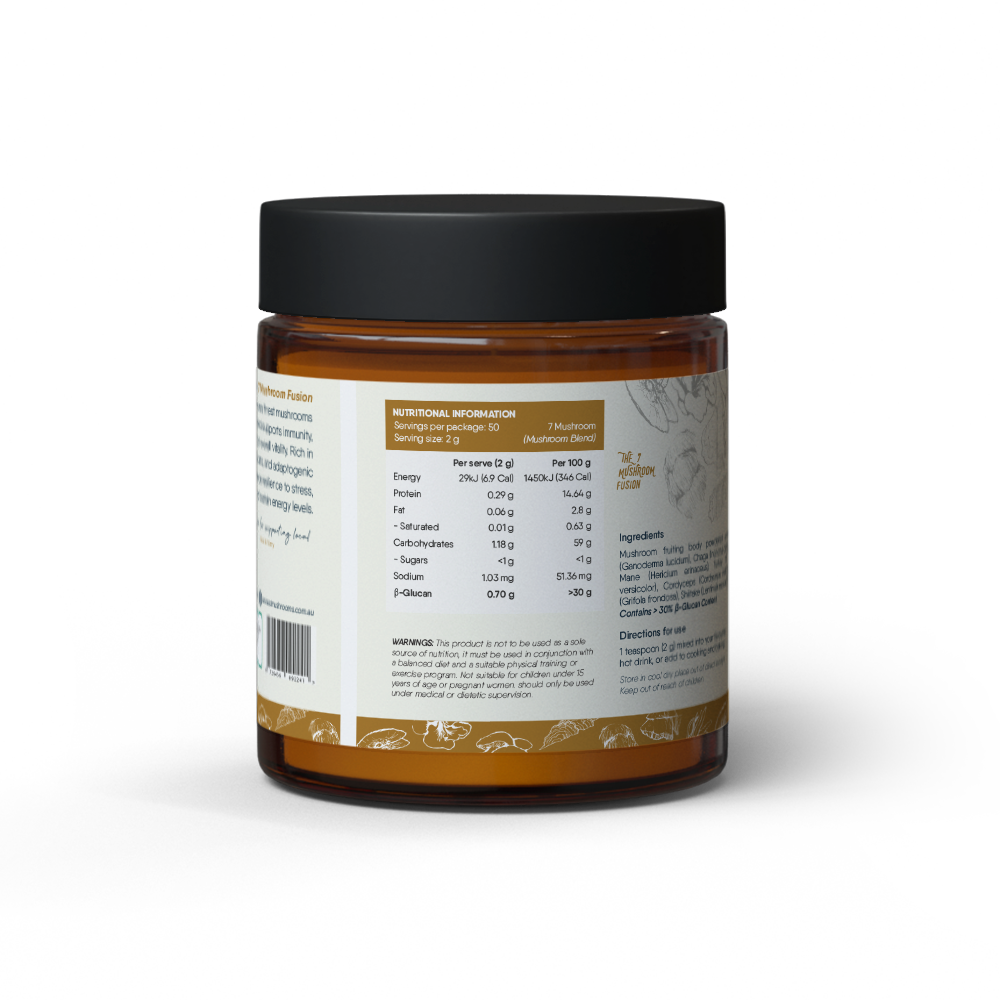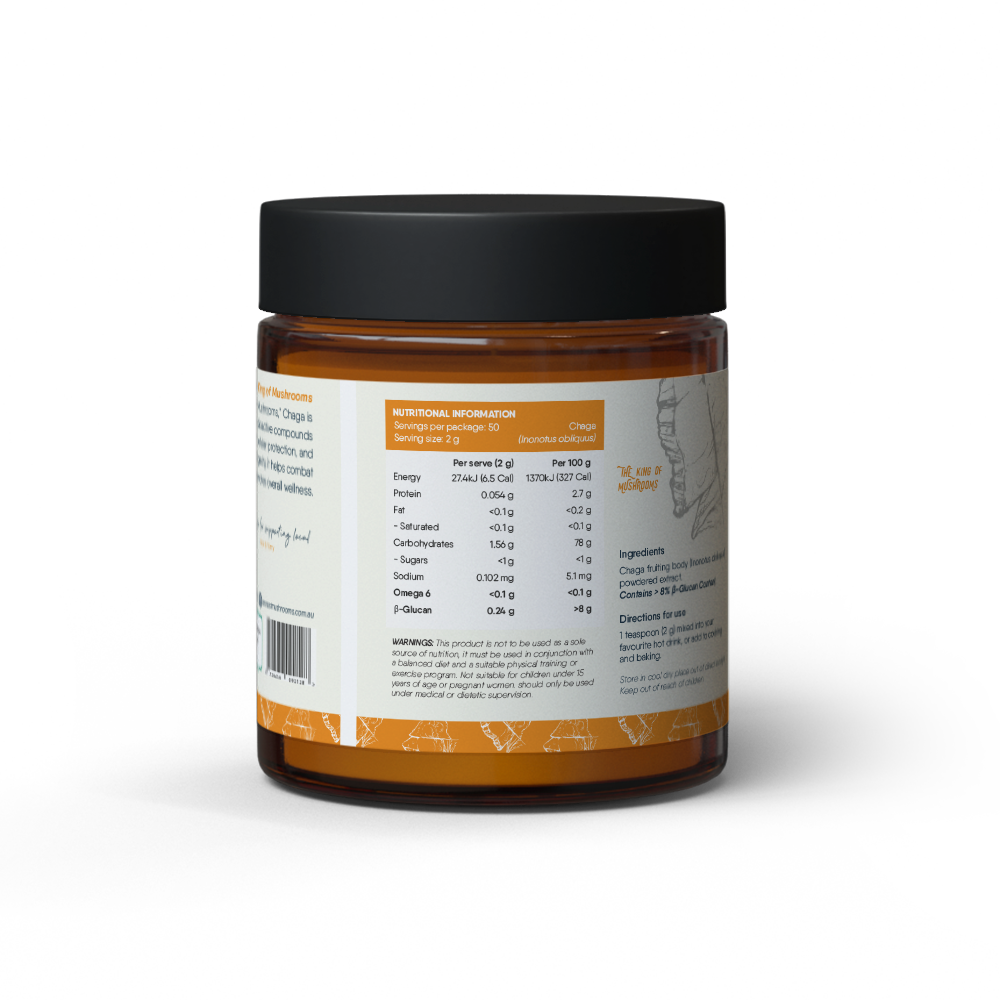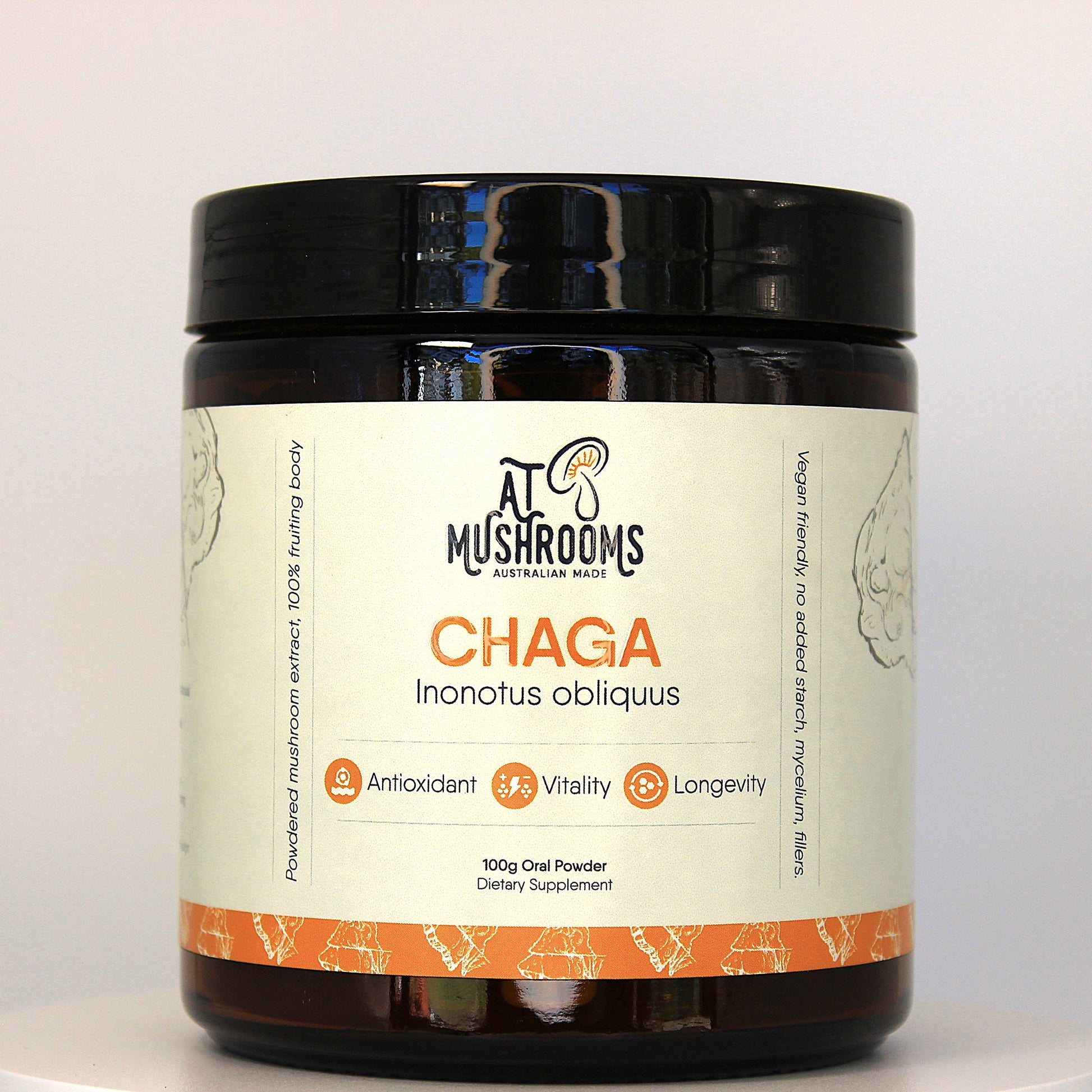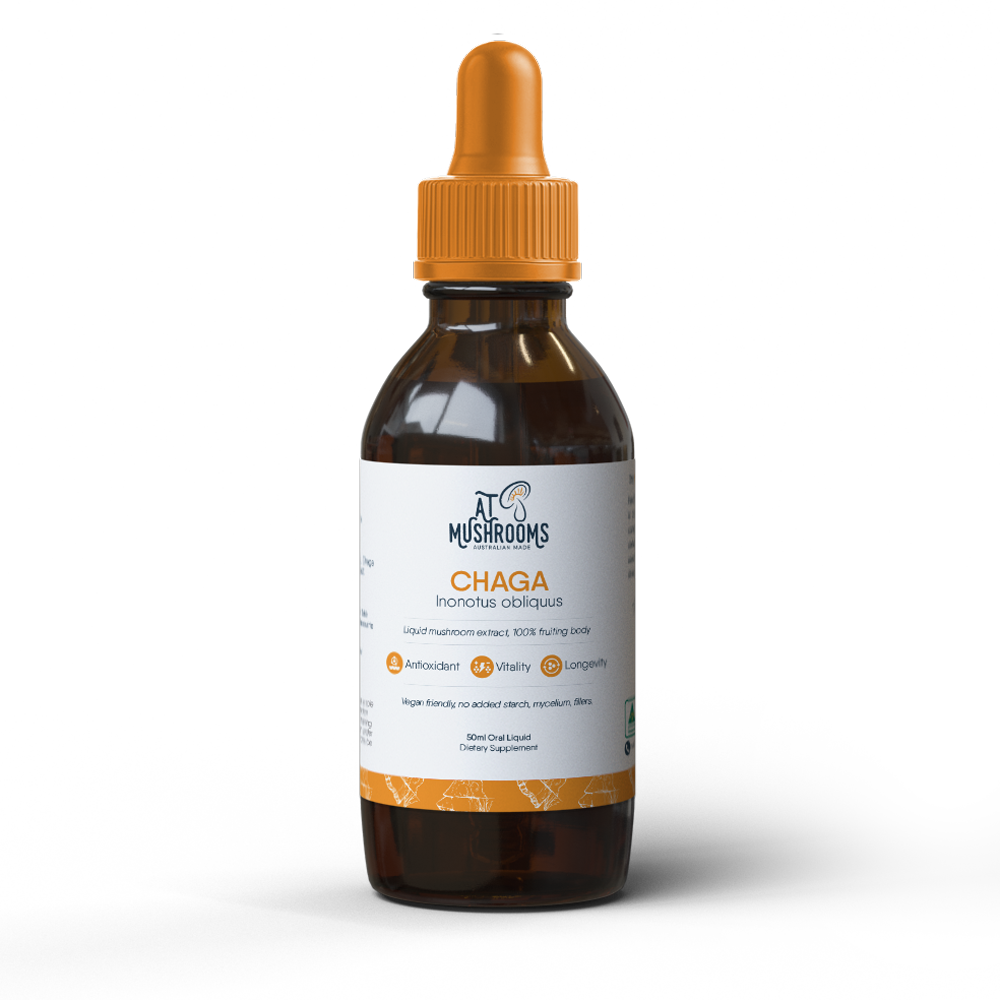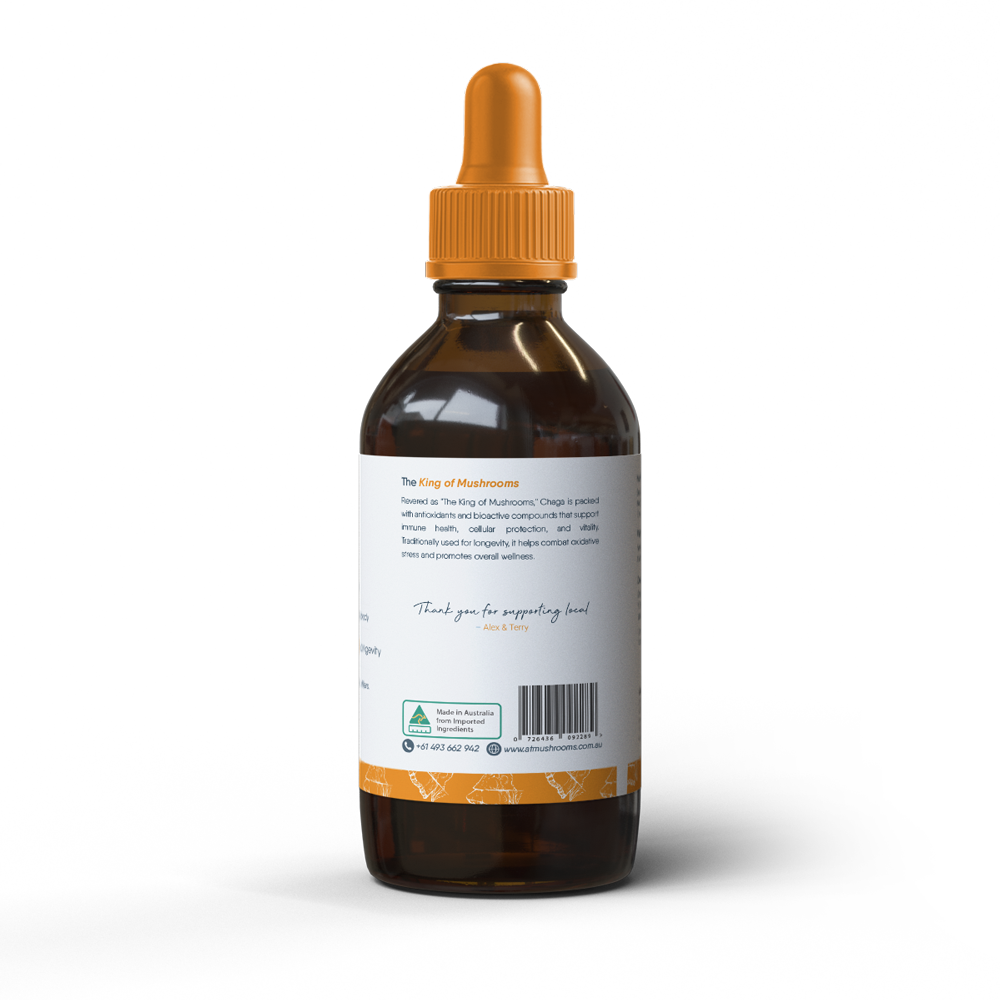Chaga (Inonotus obliquus)
In contrast to other functional mushrooms, chaga is not a fruiting body, aka a mushroom. Rather, it's a "sclerotium" – a hardened mass of fungus designed to help it survive in harsh conditions. Commonly found in birch forests, the fungus appears like burnt charcoal; however, cut inside, and you'll find a soft orange core.
Chaga was used for centuries in Russia and Northern Europe to fortify one's health. Traditionally, it was grated into a fine powder and used to brew mushroom tea.
It has many of the classic benefits of mushrooms, including:
Anti-inflammatory
It's startling how many fungi seem to enhance our immune system. Not just through antibiotics (several of which derive from fungi) but also by reducing inflammation and marshaling our body's defenses.
In the case of chaga, it promotes the formation of beneficial cytokines: proteins that regulate the immune system and recruit white blood cells to fight harmful pathogens56. It also does the reverse, inhibiting the production of harmful cytokines that aggravate inflammation57.
As a result, chaga is equally as effective at fighting infections as soothing chronic inflammatory diseases.
High antioxidant profile
Part of chaga's anti-inflammatory effects come from its potent antioxidants. In one analysis, chaga has the "strongest antioxidant activity among fungi," with the seven antioxidant components identified and isolated58.
Oxidative stress, if left untreated, produces free radicals that damage DNA, cells, and ultimately our organs. It's part of the "wear and tear" of life. Antioxidants reduce free radical damage, preventing cell death and promoting healthy organ function59.
Other studies have noted how I. obliquus antioxidants protect cells from oxidative stress and are highly effective at scavenging free radicals60.
Lowers blood sugar
In animal studies, Chaga consistently demonstrates a lowering of blood sugar levels, indicating a potential benefit to people with diabetes. One study in obese, diabetic mice saw reduced blood sugar levels and insulin resistance compared to no treatment61. Another study in mice, meanwhile, observed a 31% decrease in blood sugar levels in just 3 weeks62.
As with many of the benefits of mushrooms, the key ingredients are polysaccharides. A 2014 analysis identified several effects of polysaccharides in I. obliquus that protected against diabetes in mice63.
However, like other medicinal mushrooms, these properties need further study.
Cholesterol reduction
The potent antioxidant profile may also reduce cholesterol levels. Several studies have noted chaga's capacity to reduce levels of LDL "bad" cholesterol, total cholesterol, and triglycerides64. These molecules clog up the arteries, leading to heart disease and stroke.
Better still, Chaga boosts HDL "good" cholesterol, which removes excess cholesterol from your bloodstream61,62. This points towards a viable supplement for heart disease, liver disease, diabetes mellitus, and other chronic diseases.
Related Mushrooms for Brain & Overall Health
Lion's Mane works synergistically with other medicinal mushrooms to support comprehensive wellness:
- Reishi - Reduces stress and improves sleep quality, creating optimal conditions for cognitive function
- Cordyceps - Enhances energy and mental clarity to complement Lion's Mane's cognitive benefits
- Turkey Tail - Supports immune system health for overall wellness
- 7 Mushroom Blend - Experience the combined power of Lion's Mane with six other premium mushrooms
Learn More About Medicinal Mushrooms
Expand your knowledge with our educational resources:
Deep dive down the mycelium rabbit hole and learn about the benefits of all the mushrooms by reading scientific studies from around the world.


